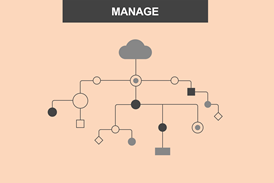Interview: Andy Maltz, Academy of Motion Pictures Arts and Sciences

Digital movie archives can be short-lived, and without concerted effort we risk losing part of our cultural history.
It is one of life’s ironies that the older a recorded document is, the longer it is likely to last. An ancient inscription, mediaeval parchment or Shakespeare first folio is still clearly legible today. Although now brittle with age, an original print of a Charlie Chaplin movie or a 78 of the Great Caruso is still playable with care, and the equipment on which to do it is pretty universal.
But a digital recording can present real difficulties. Magnetic and optical media have a surprisingly short life – often just a few tens of years – before they start to break down. Several generations of technology may have been consigned to the dustbin since a recording was made, rendering indexes and file formats obsolete and the data all but irretrievable. And the whole archive may be lost forever if a disk drive fails and reliable backup copies have not been made.
This ‘digital dilemma’ is particularly acute in the movie industry, which arguably relies more on digital media than any other art form.
“The long-term preservation of important digital assets is a multi-dimensional challenge, and if all aspects are not handled correctly, the result…
Read the full article

Sign up to IBC365 for free
Sign up for FREE access to the latest industry trends, videos, thought leadership articles, executive interviews, behind the scenes exclusives and more!
Already have a login? SIGN IN




















